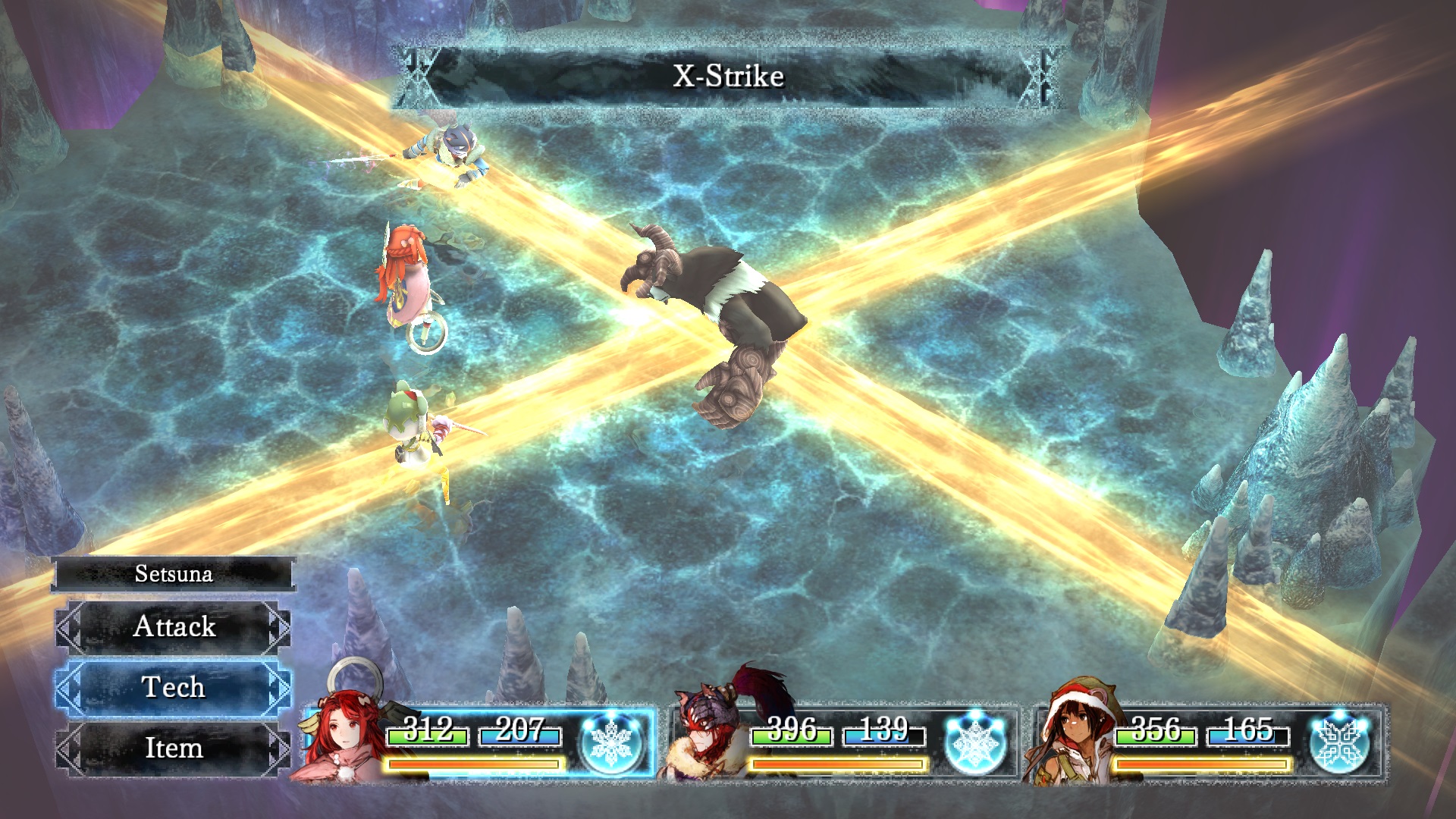[Review] I Am Setsuna
System: Switch (eShop)
Release date: March 3, 2017
Developer: Tokyo RPG Factory
Publisher Square Enix
Sometimes nostalgia gets the best of us. We look back on the vast history of video games and how far we’ve come, what’s changed and what hasn’t, for better or for worse. There are certain mechanics that evolve so much over time throughout all genres that we tend to forget how things once were when they became innovative for their time. The RPG genre has come a long way, stepping away from the linearity and turn-based tradition and heading more towards an open-world and free-form combat in a flashy hack-n-slash fashion. Sometimes, however, you want to go back to basics and back to a time that makes you fall in love with the genre all over again and elicits strong feelings of nostalgia and purity that may have faded over time as we’ve grown. I Am Setsuna brings us back to the 90’s at a time when Final Fantasy, Chrono Trigger, Parasite Eve, and a slew of other Square titles were pushing a new wave of gameplay with their Active Time Battle systems – ATB for short – where you could attack at any given point once a meter was filled rather than wait your turn in a chess-like fashion like traditional RPGs. I Am Setsuna not only brings us back to a time where RPGs were at their best thanks to their deep worlds, battle systems, and innocent art styles, but brings with it a reimagining to a forgotten style of gameplay that feels fantastic to have back in a modern take.
I Am Setsuna starts you off in a mostly empty forest where you’re introduced to your main character and the battle system. The enemies in the beginning are mostly just punching bags for you to get used to the mechanics of everything involved with the game, and while it doesn’t take particularly long to get the hang of it when you’re a hands on type of person, the text menus that pop elaborating on the UI, how to go about battling or initiating certain actions and so forth tend to be a bit much.
The game doesn’t come with a manual, so it gives it to you as a “tutorial”. While it doesn’t start off strong thanks to the player doing more reading than playing – and not just AI interactions, but manual-like explanations (table of contents and all) – it’s what happens later on and the presentation of it all that really makes itself captivating once you’re past the starting area. It’s a shame because there are sure to be some players that will undoubtedly skip all the text involved in the first bit of it, especially those with a history of RPGs, but the manual area, as we will call it, is rather crucial to your understanding of what you’re dealing with moving forward.
Like a lot of older RPGs from the 90’s, I Am Setsuna has absolutely no hand-holding whatsoever. If you’re not paying close attention to some of the dialogue in between quests, it’s easy to get lost as to what you’re supposed to do next. Though it’s not entirely at the fault of the player, there are moments that aren’t so clear thanks to an NPC saying something along the lines of “wait here”, and then proceeding to walk away with no real indication that control has been brought back to the character and then the player having to essentially find the NPC in question in whichever way they went. Little things like this may confuse people, but it’s not frequent enough to deter players from the overall experience, and as with other titles of this style, there are always audio and visual cues to give a better understanding of what’s going on and how to figure out potential puzzles.
Lost or not, no matter where you’re located – whether in a lively town or a tenebrous forest – I Am Setsuna provides a piano score that’s ubiquitous and beautiful, fitting to any event or location. In order to progress, you’ll be traversing an overworld in which the pianos perpetually reign, and where you’ll make the choice of how to approach. While a lot of sections of I Am Setsuna’s universe seem big, a lot is just for show. Paths sometimes seem to imply you can walk a certain way, like up a mountain or past a river in the overworld, but ultimately you’ll find yourself mostly going to three or four places that actually have the ability to be entered in a deceivingly open space. This isn’t necessarily bad due to the fact that the overworlds are all beautifully crafted and look like they were made with oil pastel, and it’s nice to go out there whenever you need to save and take a break from all the dramatic and emotive experiences you’ll run into throughout your journey. There’s an immense amount of information to take in both for lore purposes and the player’s own gain, so these places are rather dense once you enter them, and what you gain is typically invaluable when furthering the story.
Within a lot of the forests you come by, and wilderness in general, you’ll see a multitude of enemies in your way that you must slay in order to progress. The battle system may seem straight forward enough for veteran players, but there are a lot of mechanics that we either haven’t seen in a while or are new entirely.


